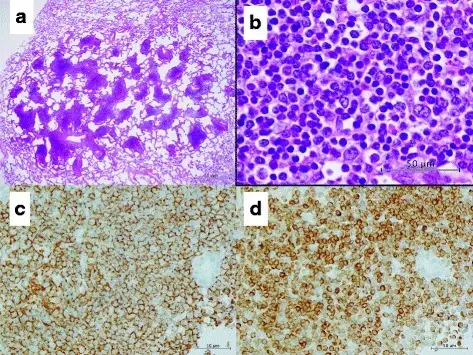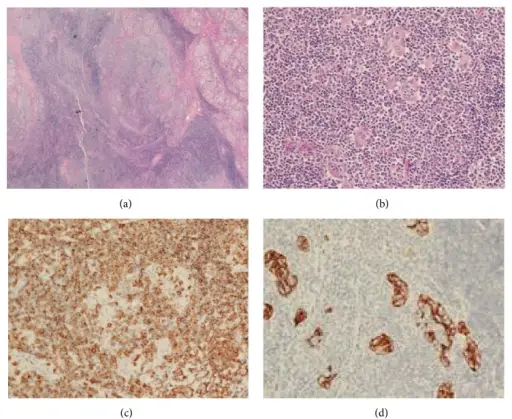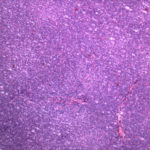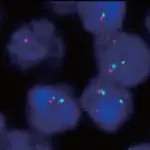Extranodal marginal zone lymphoma is a low-grade B-cell lymphoma that originate at virtually any extranodal site and arises in organs that normally lack lymphoid tissue (eg. stomach, intestine, thyroid, lung, and skin).
What is the Pathology of Extranodal Marginal Zone Lymphoma?
The pathology of extranodal marginal zone lymphoma is:
-Etiology: The cause of extranodal marginal zone lymphoma is chronic antigenic stimulation due to inflammation brought about by an infection.
-Genes involved: MALT1 gene, BCL10 gene.
-Pathogenesis: The sequence of events that lead to extranodal marginal zone lymphoma has been shown to be associated with chronic immune reactions driven by bacterial, viral, or autoimmune stimuli.
-Histology: The histology associated with extranodal marginal zone lymphoma shows poorly defined follicular appearing areas that are composed of monocytoid B cells that feature enlarged nuclei.
How does Extranodal Marginal Zone Lymphoma Present?
Patients with extranodal marginal zone lymphoma typically have a slight female predominance, present at a wide age range of 21 – 92 years with mean age of 52-59 years. The symptoms, features, and clinical findings associated with extranodal marginal zone lymphoma include fever without an infection, night sweats, unexplained weight loss, skin rash, chest or abdominal pain, tiredness.
How is Extranodal Marginal Zone Lymphoma Diagnosed?
Extranodal marginal zone lymphoma is diagnosed by imaging tests such as X-rays, ultrasounds, CT scans and MRI scans.
How is Extranodal Marginal Zone Lymphoma Treated?
Extranodal marginal zone lymphoma is treated by antibiotic therapy if linked to an infection, corticosteroid therapy, chemotherapy, radiation therapy and surgery.
What is the Prognosis of Extranodal Marginal Zone Lymphoma?
The prognosis of extranodal marginal zone lymphoma is good with a 5-year survival rate of 90%.




